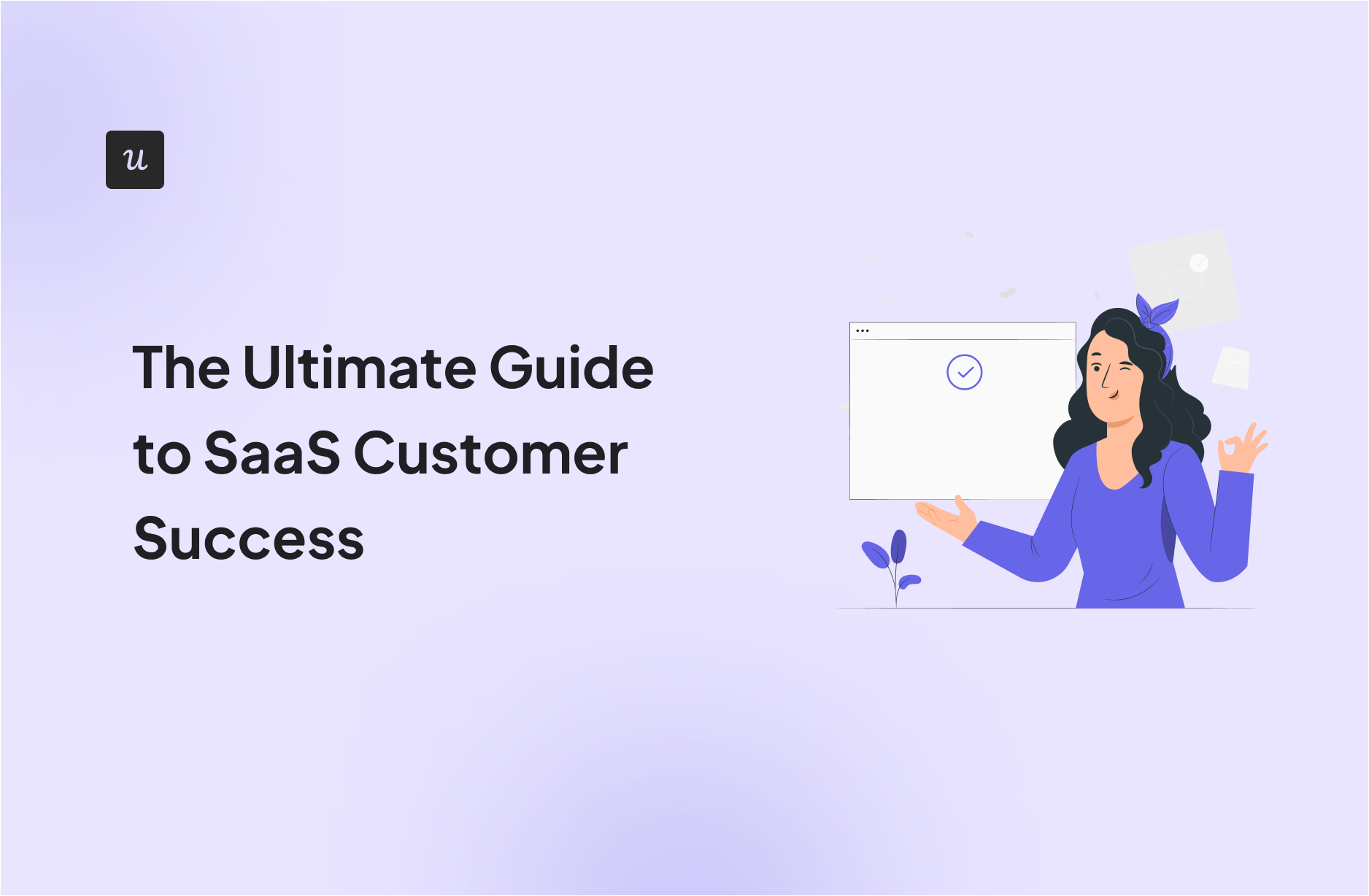
Customer success is a core growth driver for any SaaS business. The SaaS market is crowded with tons of similar products and the best ones that stand out are those who delight their customers regularly.
Are you wondering how to retain your customers and make them love your product? No worries! We have created an ultimate guide that will serve as a blueprint for SaaS owners to maximize SaaS customer success.
From customer retention to LTV: CAC ratios and customer stickiness, we’ll go over everything you need to know. Let’s get started!
What is the primary goal of a customer success strategy?
Which of these is a key metric to measure customer success?
What is an effective strategy to improve onboarding for better customer success in SaaS?
Ready to master customer success in SaaS?
See how Userpilot can help you reduce churn and increase customer loyalty without writing a single line of code.
Try Userpilot Now
See Why 1,000+ Teams Choose Userpilot

What is customer success?
Customer success or customer success management is the practice of ensuring customers get their desired outcome when using your product or service. Customer success goals include increasing customer retention, revenue, loyalty, and overall satisfaction with the product or service provided.
Why is customer success important for SaaS?
Customer success is a major aspect of any successful SaaS company. It’s the main way to ensure that customer needs are prioritized and they get value out of your product or service — leading to user activation.
Having a good customer success team can ensure long-term, sustainable business growth while a bad one could wreck the reputation of a SaaS product. Think of them as the first line of defense when it comes to hearing out customer concerns, implementing new strategies, and reducing churn.
In fact, buyers are willing to pay more for a product if they have a better customer experience. This is a reminder that having the right customer success strategies is just as important for a company’s bottom line as it is for users on their customer journey.
Customer success vs customer experience vs customer support
While the three terms are sometimes (erroneously) used interchangeably, customer success isn’t the same thing as customer experience or customer support. All three are important aspects of any SaaS business but there are key differences between them.
Customer support could be likened to acute care in a hospital. It’s a mechanism for dealing with short-term problems and assisting customers who have hit a sudden roadblock in their user journey. Sticking to the analogy, customer success efforts can be thought of as long-term treatment plans
A solid customer success strategy understands the needs of your users in the big picture and helps them achieve their desired goals throughout the entire customer lifecycle rather than at a single point. Finally, customer experience is the overall perception one has when interacting with your product.
How to measure customer success? Key metrics to track
While some SaaS companies may assume that users are getting what they want just because revenue keeps growing, this isn’t always the case. The best way to gauge customer success is by monitoring a few key metrics. Let’s take a closer look at each one.
These are the five most important customer success metrics that you should be watching:
- Net promoter score. The NPS score is a standardized measure of customer satisfaction and customer loyalty by seeing how likely they are to refer your product to others on a scale of 1-10.
- Churn rate. Churn rates measure how many customers you’re losing every month, with high rates indicating issues in product-market fit or customer success.
- Customer stickiness score. Customer stickiness tells you how often users come back to your product (which would tell you whether or not they’re receiving ongoing value.)
- Customer lifetime value. LTV is the average income your company earns from each user throughout their total time as a paying customer.
- Customer engagement score. The CES metric measures interactions like product usage, feature discovery, subscription upgrades, support tickets, and more.
1. Net promoter score
NPS score tells you how likely a user would recommend your product to others. This will give you a clear idea of their true satisfaction level and loyalty which makes it an invaluable metric when trying to retain customers.
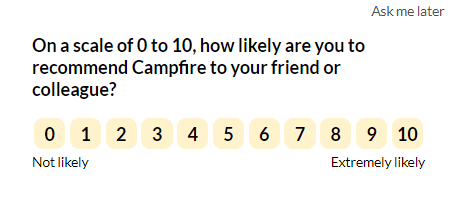
How to measure net promoter score?
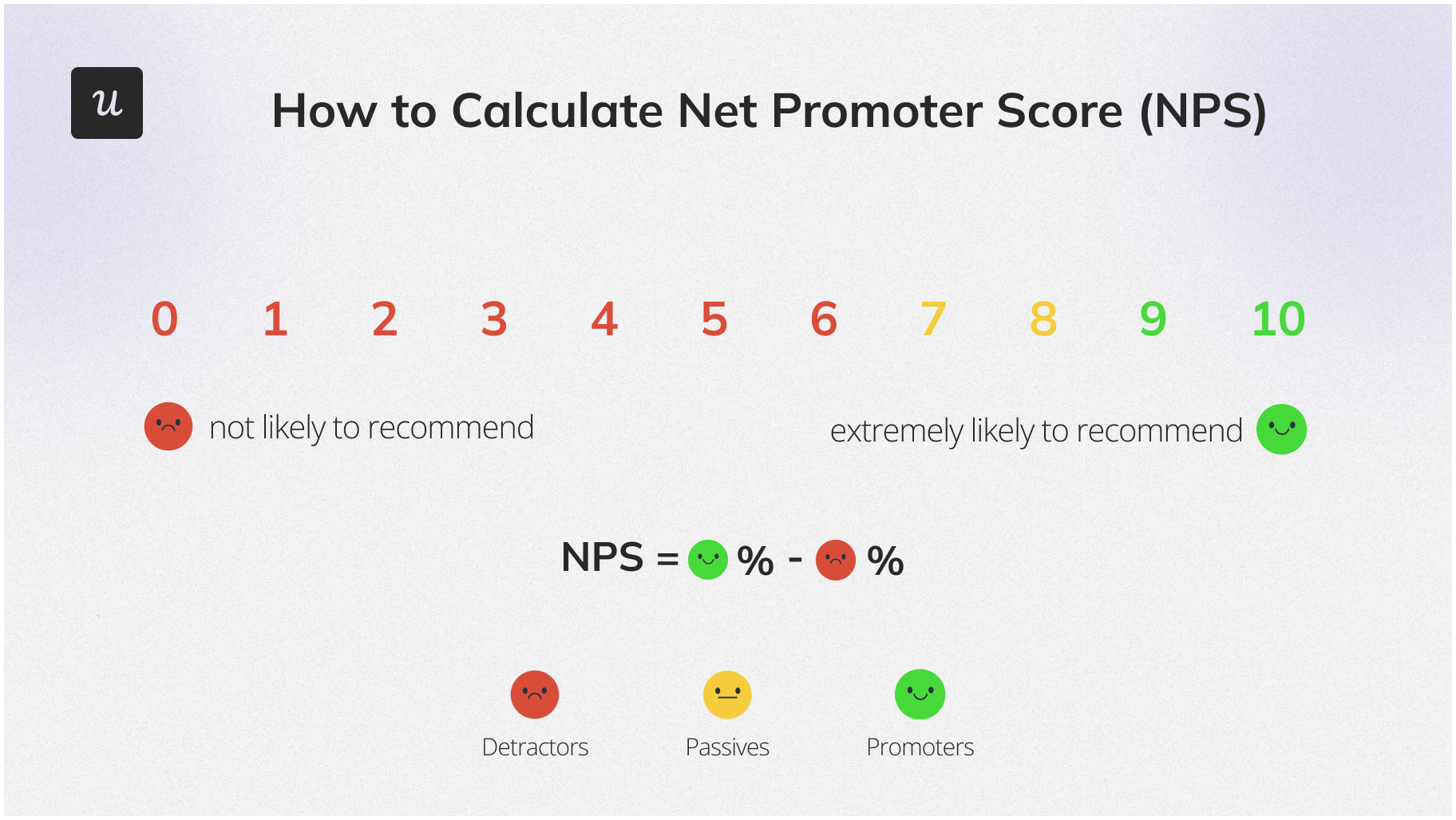
SaaS companies can measure their NPS metrics by taking the total number of promoters and subtracting detractors from that number. Remember, promoters are classified as respondents with a customer satisfaction score of nine or higher while detractors are respondents with a score of six or lower.
Those who respond with a seven or eight are considered passives and excluded from the calculation.
2. Churn rate
Customer churn is a metric that tells you how many customers you’re losing in a given period. Calculating your churn rate and analyzing the data can tip you off on which product flaws may be causing the losses.
After all, it can be very expensive to acquire customers which is why helping your current customers get their desired outcome is crucial. As this is one of the most important metrics, you should always employ methods of collecting feedback that can help you curb churn rates.
Churned customers can provide valuable feedback on why they left so it’s best to start with them. Creating churn surveys can help you capitalize on this untapped data and proactively resolve the source of customer churn before you lose more revenue.
How to measure customer churn rate?
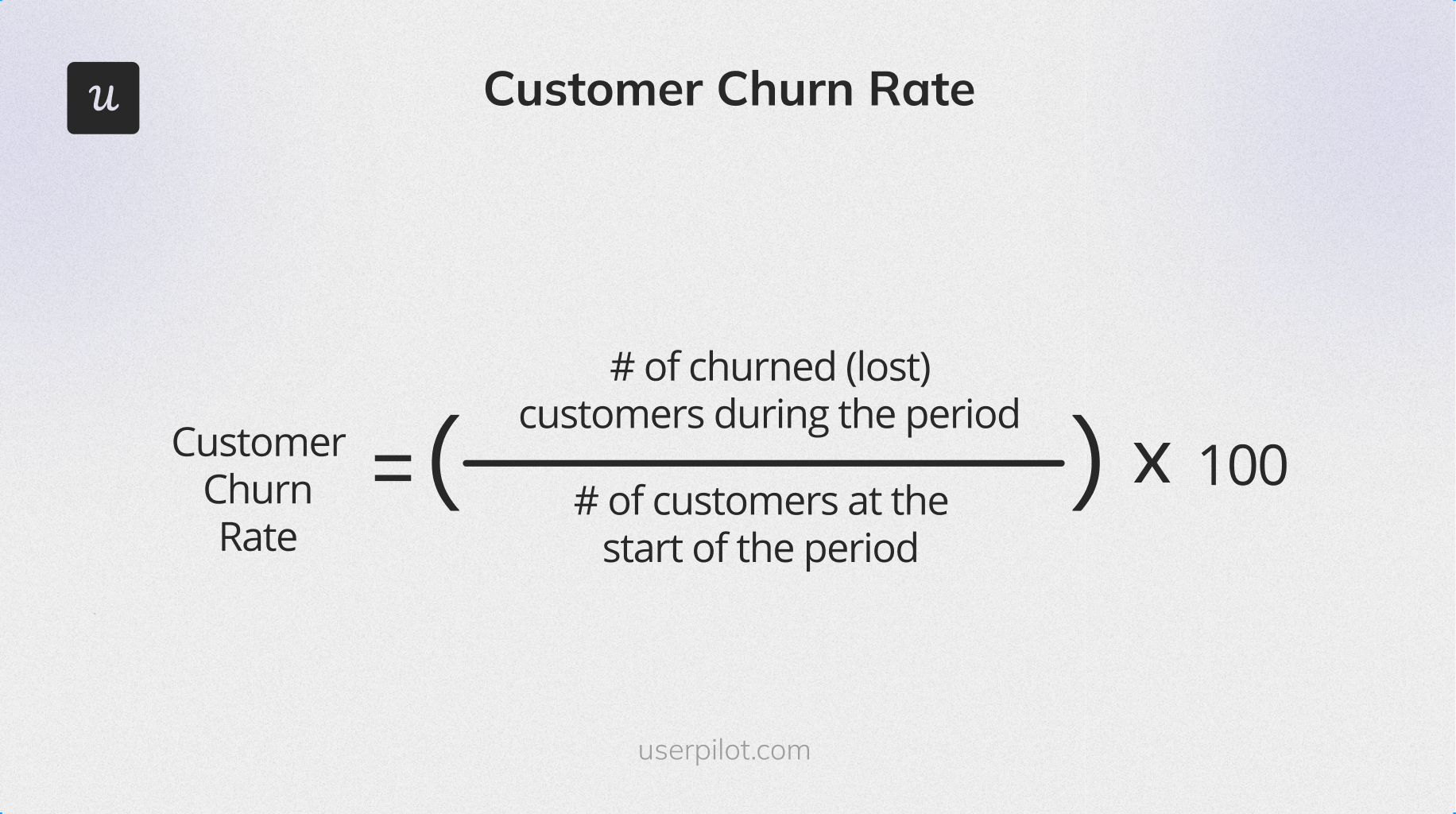
SaaS companies can measure their customer churn rate by taking the total number of users lost during the period, dividing it by the total number of customers at the start of the period, and multiplying the figure by 100.
3. Customer stickiness score
The customer stickiness score is exactly what it sounds like. The metric tells you how often users come back to your product. High scores would indicate that your product provides continuous value while low scores suggest that there could be obstacles that reduce engagement over time.
Furthermore, the customer stickiness score helps keep you accountable since it measures true engagement rather than vanity metrics. If you only look at MAU data and see it on an uptrend then you might miss that the ratio of MAU-DAU is actually falling, which is what stickiness tracking prevents.
How to measure customer stickiness score?
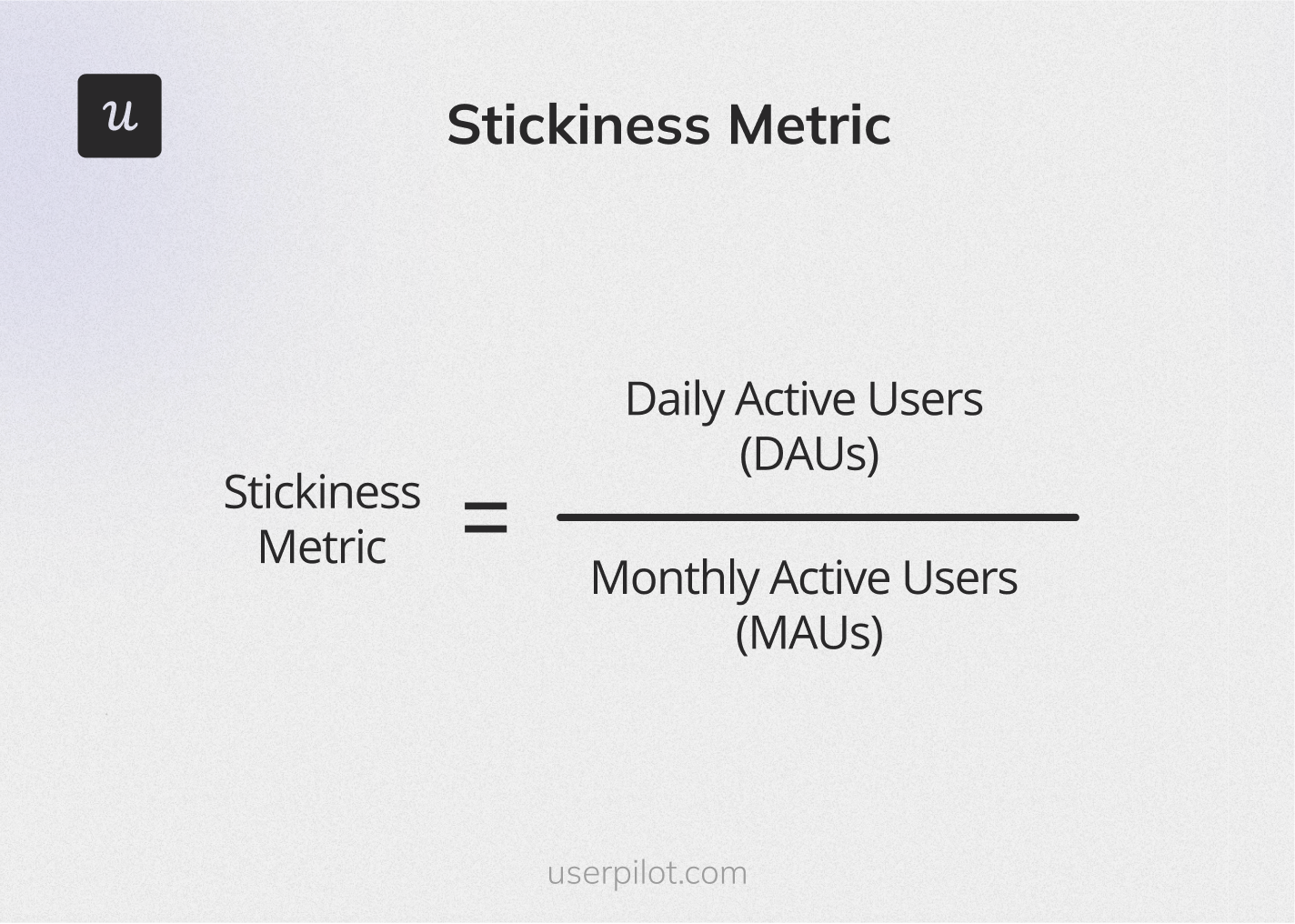
SaaS companies can measure their customer stickiness score by dividing their daily active users by their monthly active users. Your customer stickiness score, alongside other retention metrics, can help you optimize the product for long-term use.
4. Customer lifetime value
Customer lifetime value — often abbreviated CLV or LTV — is the average amount of money that a company earns from a user over the total period of time that they’re a paying customer. Tracking LTV over time can help you spot upward/downward trends or craft customer expansion strategies.
Customer success can have a huge impact on LTV. After all, when customers succeed at their job-to-be-done they’re more likely to upgrade to a pricier subscription. This boost in expansion MRR is a clear path to achieving higher customer lifetime values.
How to measure customer lifetime value?
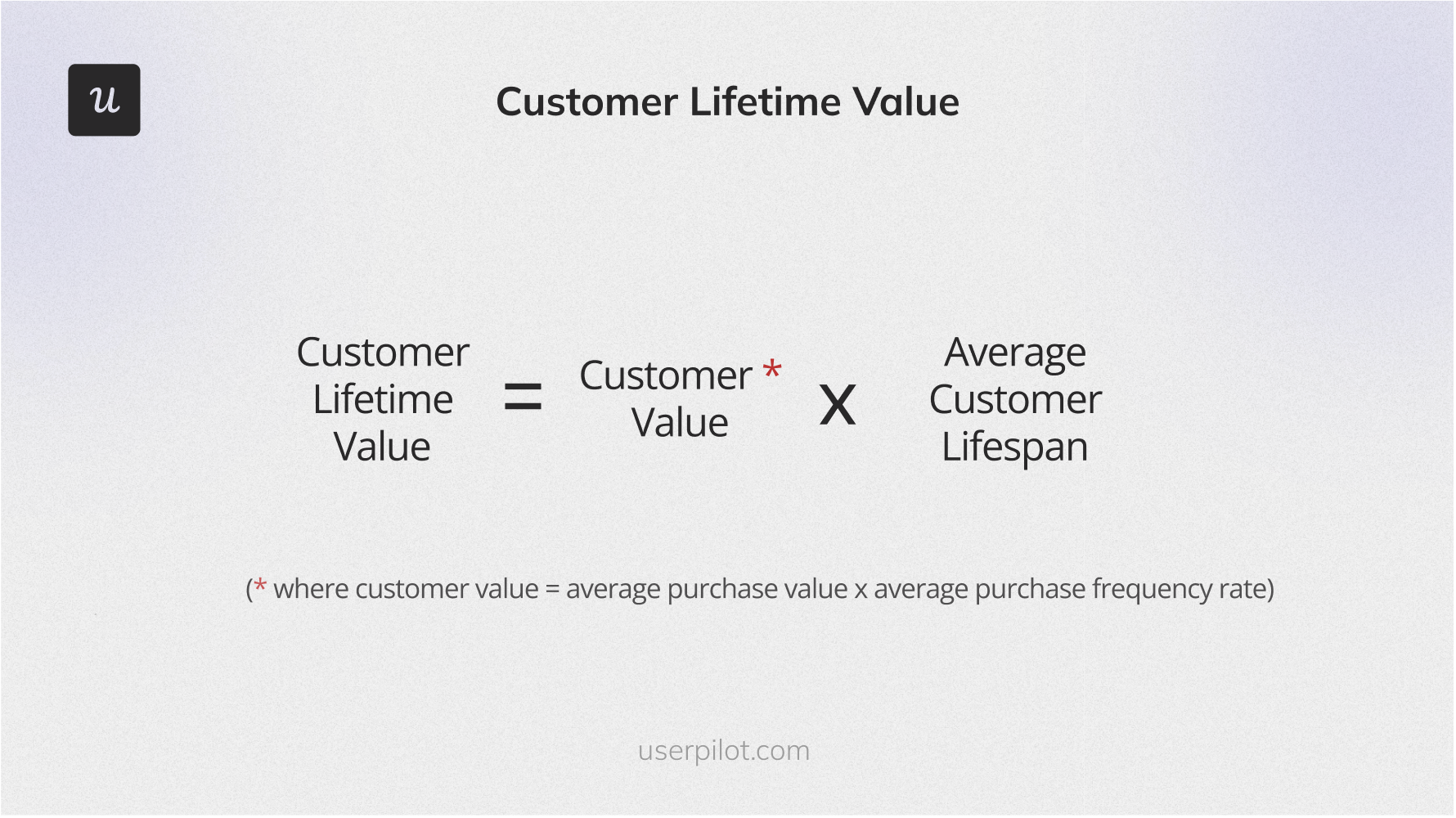
SaaS companies can measure their customer lifetime value by multiplying customer value with the average customer lifespan. Here, customer value is calculated as the average purchase value multiplied by the average frequency of purchases from your SaaS.
5. Customer engagement score
The customer engagement score is a metric that measures interactions between your SaaS product and the people who use it. Tracking your CES metric can help you segment users with low scores to nurture them before they churn and have a dedicated customer success manager reach out to them.
How to measure customer engagement score?
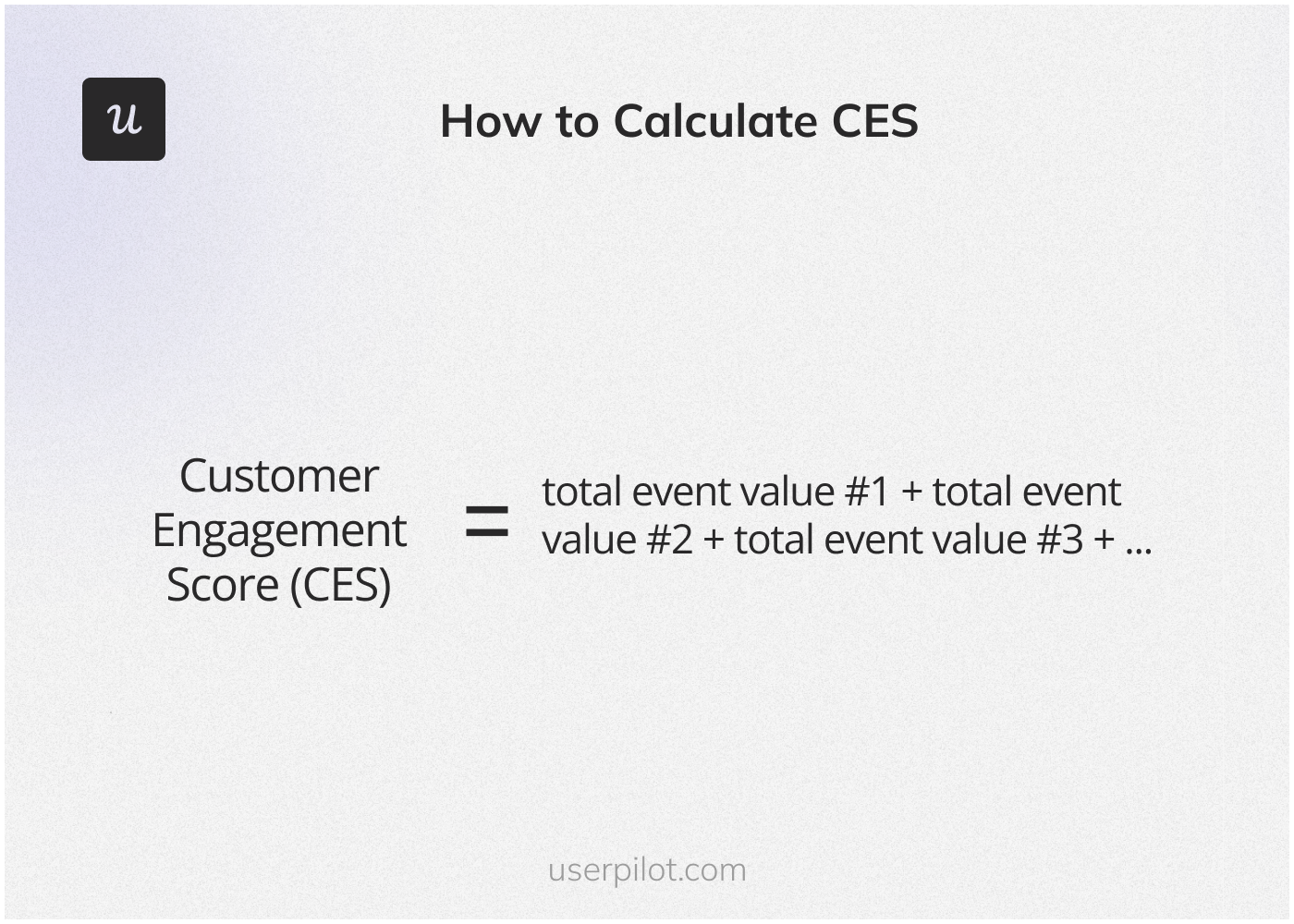
SaaS companies can measure their customer engagement score by identifying core product events and assigning a weighted score to each. Once you’ve done that, multiply the weight of a single event by the frequency of these events to get an event value.
Finally, add up all the event values per customer to get your final customer engagement score.
4 strategies to achieve customer success in SaaS
Much like chess, a customer success strategy is comprised of multiple tactics that come together to ensure your customers achieve their desired goals. Your strategy should identify and address the needs of a SaaS customer from the onboarding process to an eventual upsell towards the end of the journey.
Here are four customer success strategies and best practices that we’re about to dive deeper into:
- Interactive walkthroughs. Unlike the linear product tours that you’d often see in an older SaaS company, interactive walkthroughs can help users learn by doing (leading to improved information retention.)
- Self-support systems. Having a self-service support system will improve customer satisfaction by equipping users with the tools to solve their own problems while simultaneously reducing the load on your representatives.
- Secondary onboarding. Trying to fit everything onto a primary onboarding flow can be difficult and detrimental which is why having additional onboarding rounds can be a good compromise.
- NPS surveys. Beyond telling you how satisfied, loyal, and likely to refer your customers are, NPS surveys can also provide insights on what to change about your product.
1. Personalize customer onboarding with interactive walkthroughs
Interactive walkthroughs are a step-by-step product guide that helps users get familiar with your product at their own pace. It’s one of the best ways to reduce the TTV (time to value) and can also be invaluable for PARO.
Starting out with a welcome screen can prepare users for what they’re about to learn while providing an early opportunity for customer segmentation — leading to the ideal contextual onboarding setup. See how Kontentino uses interactive walkthroughs to ensure users tick every box on their checklist.

Kontentino created their interactive walkthrough using Userpilot and witnessed a 10% increase in their activation rate. Read the complete case study here.
2. Educate your customers with a self-support system
Over 60% of customers prefer self-service support like a knowledge base or onboarding chatbot. It’s not hard to see why considering solving problems themselves can be faster than waiting to speak with an agent in some cases.
Having interactive product guides at the start of the onboarding process is another practice that can reduce inbound support tickets while improving the customer experience. One survey by Coleman Parks even found that a self-service model can increase customer retention rates by up to 85%.
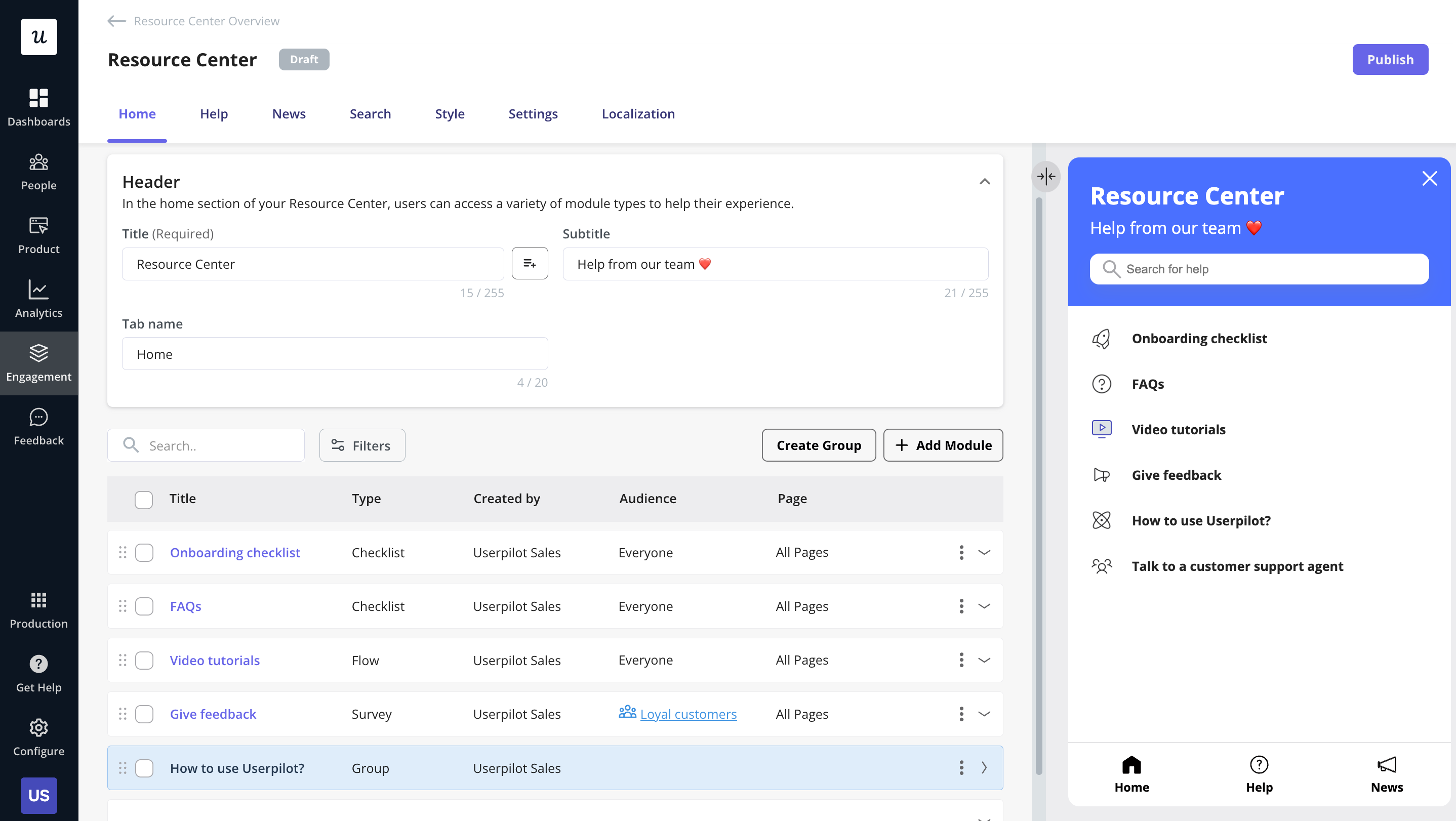
3. Use secondary onboarding to boost customer engagement
Your product’s most advanced features are likely the ones that will keep users from switching over to a competitor which is why secondary onboarding and even tertiary onboarding can be so beneficial. In addition to reducing churn, continuous onboarding can also lead to more upgrades.
Trying out features they’ve never used before increases the value that a user receives, thus driving the potential for customer expansion. If you’re a simple SaaS company with a single tool then a single flow may be enough but complicated product suites with tons of features should absolutely go further.
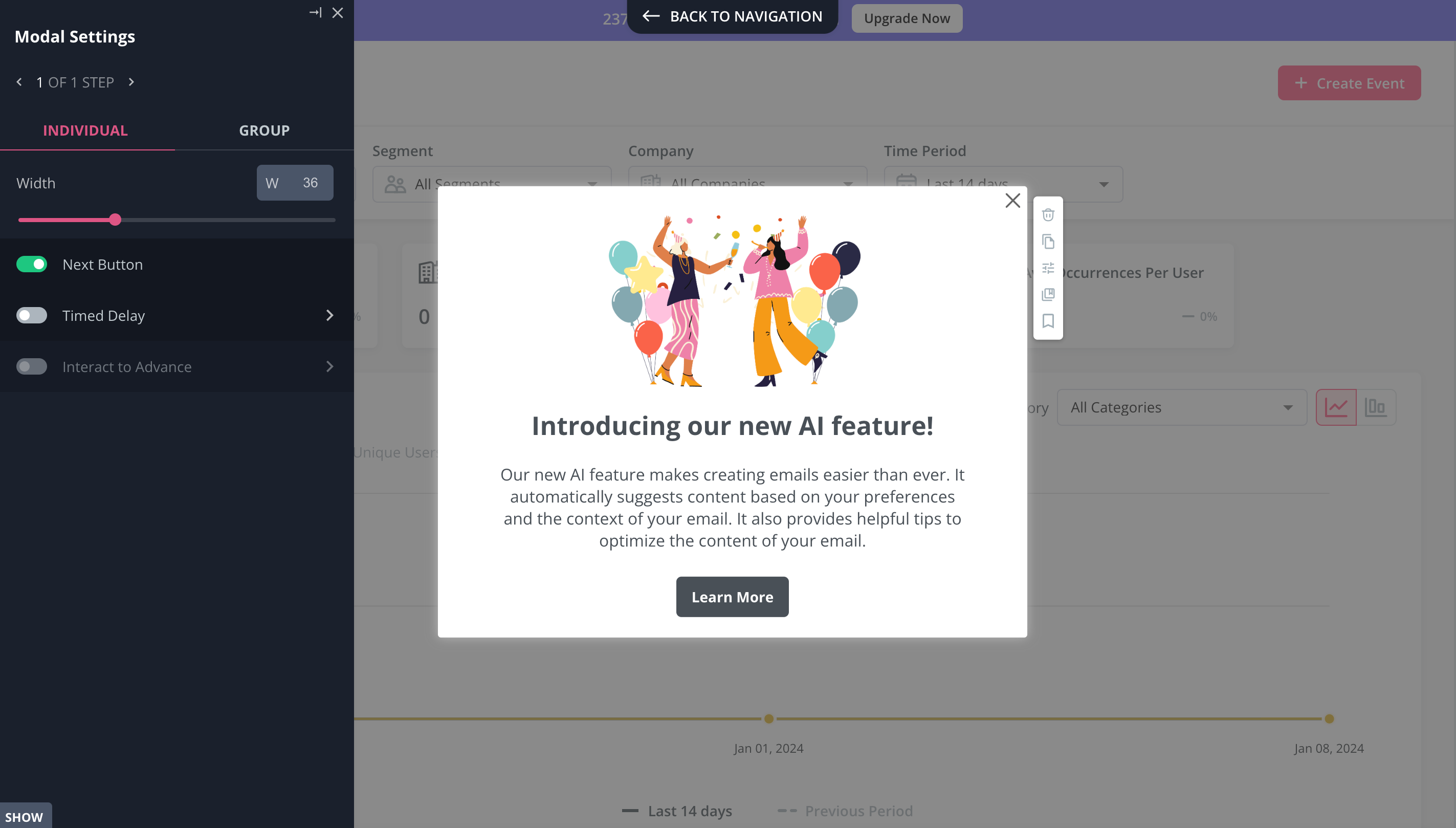
4. Gather and collect customer feedback with NPS surveys
Asking customers for feedback has two main benefits. First of all, you’ll get information that can guide you on how to improve the user experience for everyone who engages with your product. Secondly, you’ll show them that you care about what they have to say which is always reassuring.
In-app NPS surveys are the most straightforward way to gather and sort through user feedback.
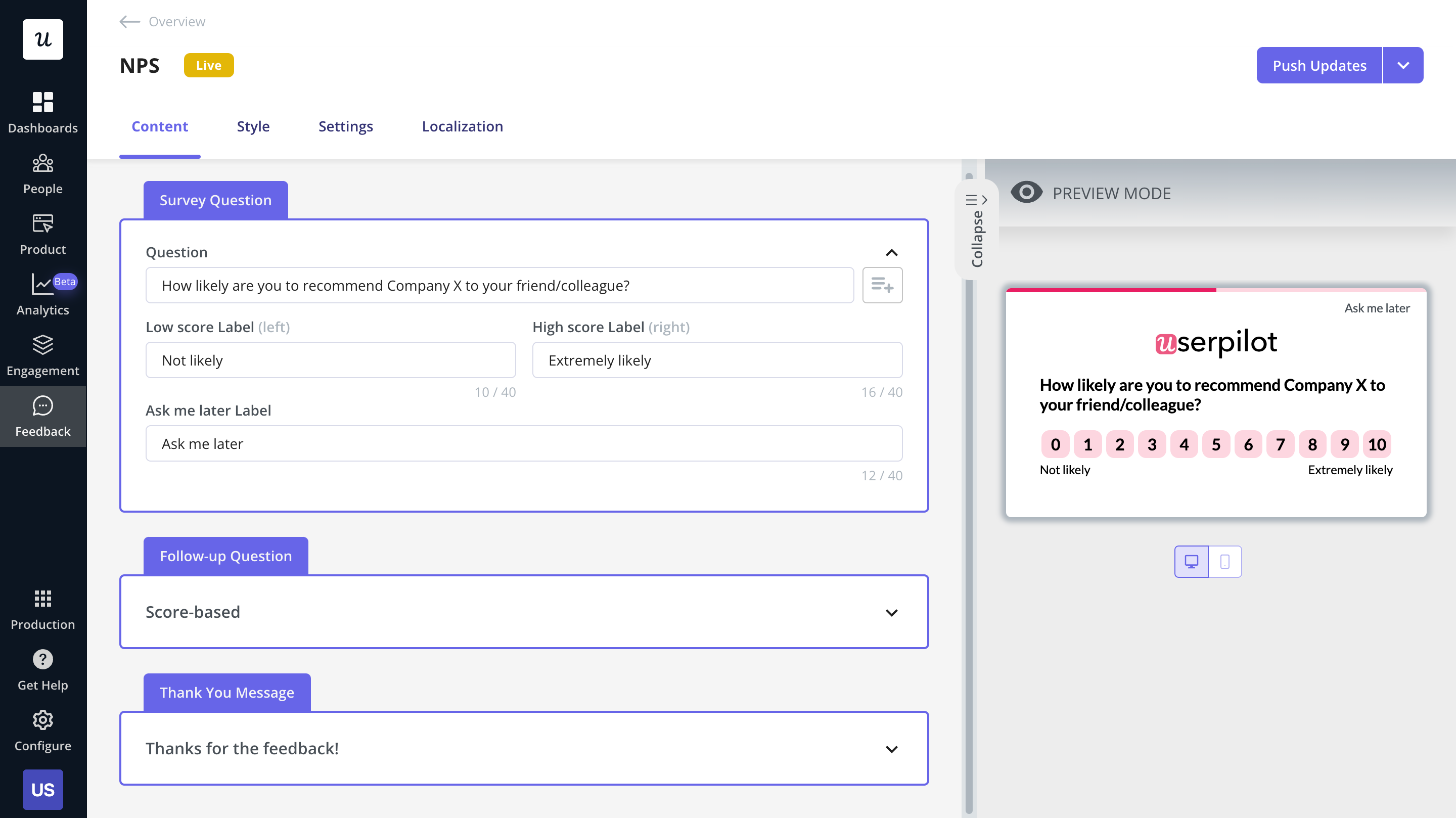
Tagging specific keywords can help you sort your NPS data and spot trends that could be influencing the scores.

You could also run feature surveys to see if your customers like the latest changes you’ve made to the product. At the end of the day, knowledge is power so having more information on how your users feel can be a significant advantage to customer relationship management.
How do you create a customer success plan?
If you truly want to optimize your product strategy for customer success then it’s essential that you have a clear plan in place. There are a lot of things that go into ensuring customer success but here are five steps you need to take to create a viable game plan.
1. Identify the customer’s end goal
The entire customer success process comes down to helping customers achieve their end goal. That being the case, you need to define customer success in the context of your users before you can start optimizing the experience for your customers.
Whether you collect feedback through phone calls, surveys, or market research, the point is that you need a clear, in-depth understanding of what your customers are trying to accomplish. Once you’ve identified the goals of your existing customers and new customers, you can guide them toward it.
2. Map processes to AHA moments
AHA moments are an essential part of the customer lifecycle. It’s the moment when your customer says ” Now I get why this solution is so valuable” — a point at which their loyalty goes through the roof and they’re more likely to upgrade when the next upsell prompt comes up.
Identifying potential AHA! moments (yes, there are multiple) and optimizing your customer journey map to get users to this key stage sooner can work wonders for retention. Everything should be driving customers towards their AHA since it’s the moment when your tool goes from “nice” to “invaluable.”
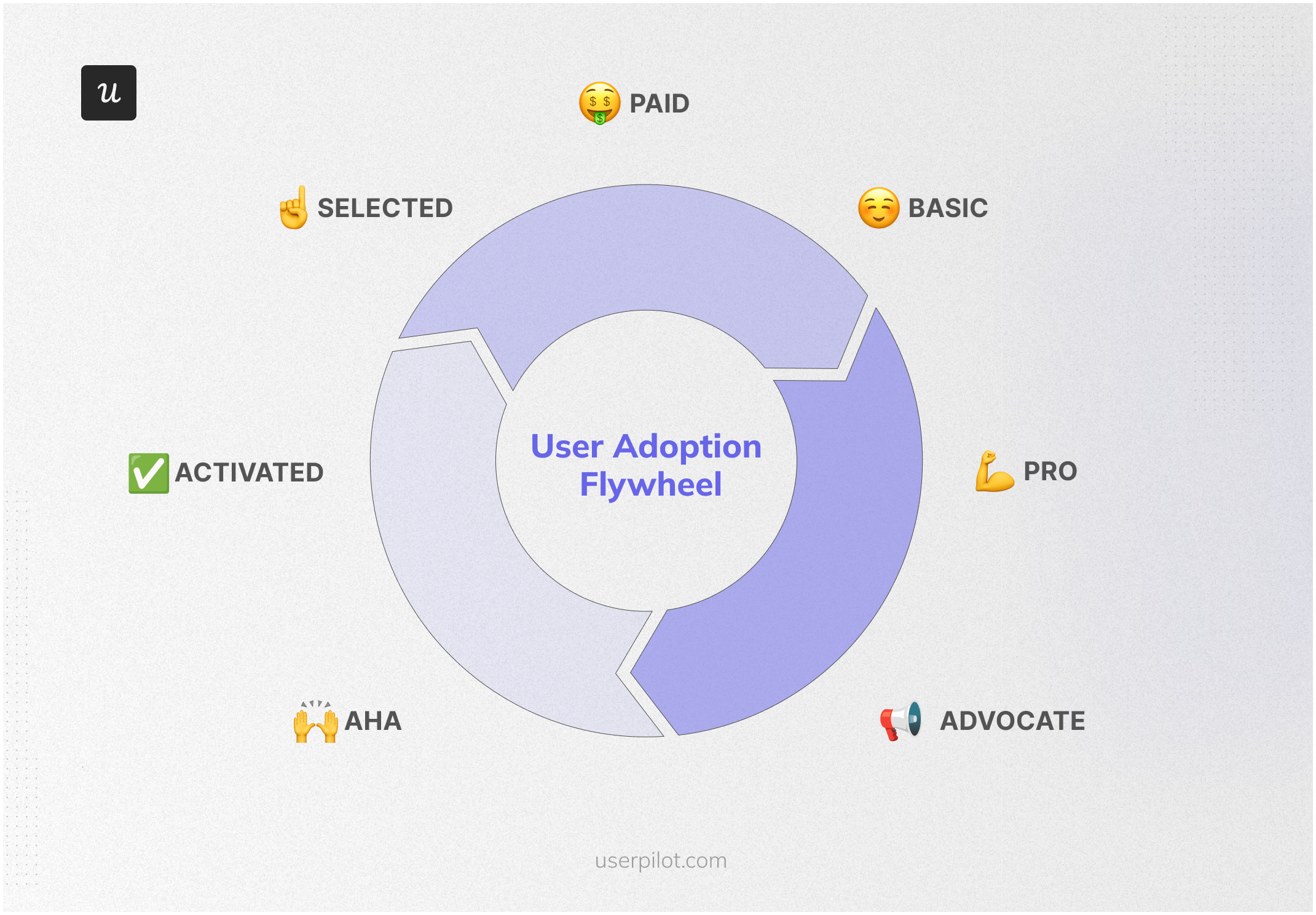
3. Build a great customer success team
Most companies put a lot of emphasis on having a reliable customer support team to preserve their reputation but hiring good account managers for your customer success team is just as important. In an ideal SaaS world, customers would be able to achieve their goals without opening a support ticket.
Sadly, this is something that other companies haven’t realized yet which is why they don’t offer as much training to new employees on their customer success team. Ultimately, building a good team comes down to finding people who understand your onboarding process and apply feedback well.
4. Align your customer and product teams
A SaaS business works best when the goals of its customer success and product teams are perfectly aligned. As there are bound to be deviations between the roadmaps of these departments, a mutual understanding of the desired outcome on both ends is crucial.
Encouraging open communication between your CS team and product developers will get you the best of both worlds. The employees who spend all day talking to customers will be able to relay the detailed feedback to the people who know your product like the back of their hand.
By sharing key goals and insights, you’ll prevent any disconnection between both teams and help your business adapt to its customers that much faster. One approach you could take is having group brainstorming sessions with members of both teams sharing their thoughts in a safe space.
5. Improve over time
The prerequisites for promoting customer success are ever-evolving which is why your business, employees, and products need to keep improving at the same pace. If one company stays complacent in its value proposition for too long then another business is bound to disrupt it in the near future.
Whether it’s churn/feature surveys, support tickets, or other methods, getting data is always important. SaaS businesses need to keep fine-tuning their pricing models, UI, features, and internal processes based on customer feedback if they hope to keep up with the competition.
Best customer success tools for SaaS
If you want your customer success managers to realize their full potential then it’s essential that you arm your customer success team with the necessary tools for the job. Here are five tools you should consider getting for your customer success team.
Userpilot
While Userpilot is primarily a customer growth tool, it still deserves a spot on this list since it has quite a few features that are beneficial to customer success. For instance, its customer journey analytics will help your customer success team dig deep into every user segment.
They’ll be able to see how different groups engage with your product and which features may not be getting as much attention. The advanced segmentation capabilities of this onboarding software can also help you improve your in-app messaging and tailor it towards your customer success goals.
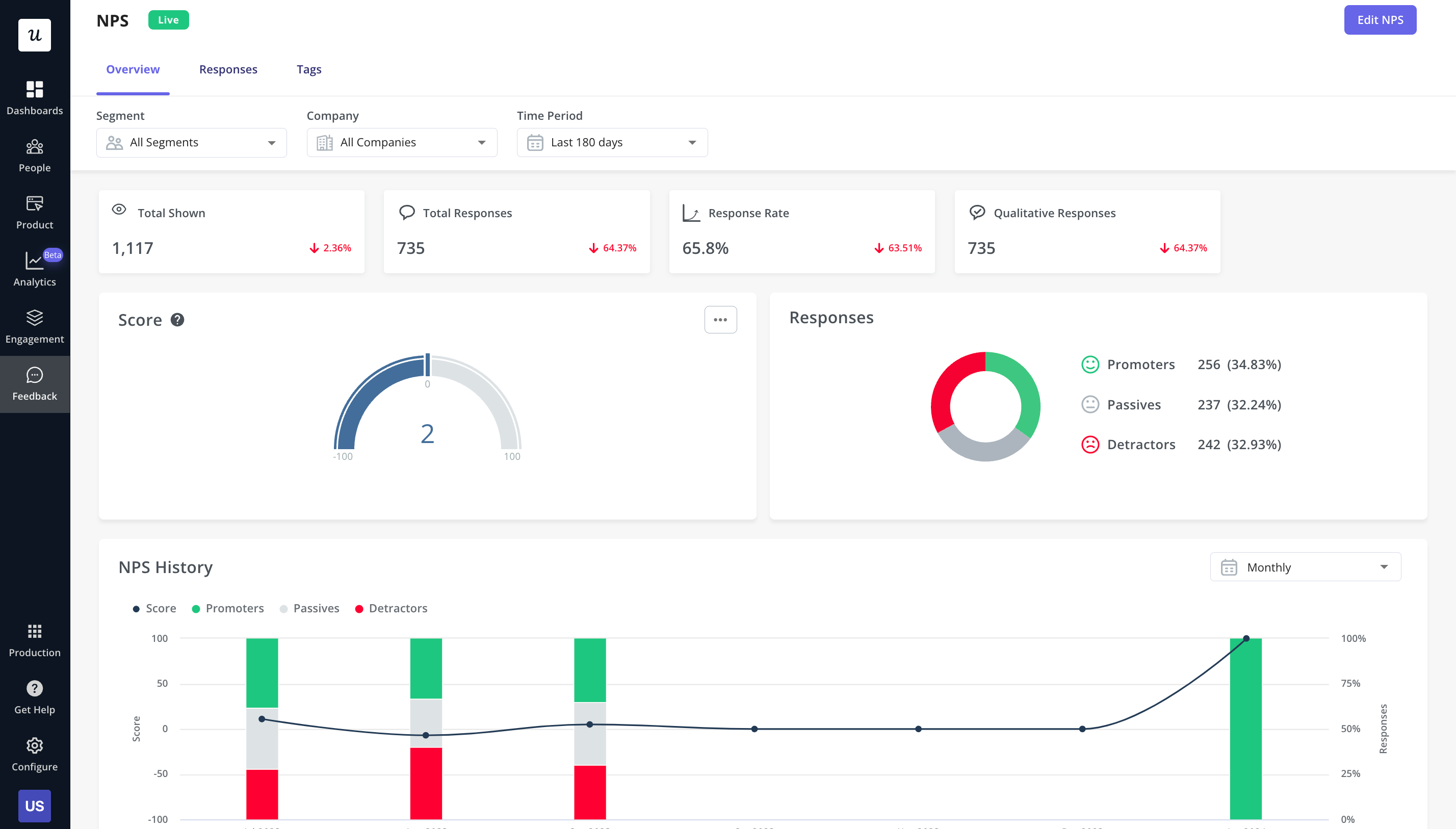
Userpilot is also a fully no-code solution which means your customer success manager won’t have to double as a coder just to improve engagement and retention with the tool. Finally, you’ll also be able to collect user feedback through NPS surveys which will give your customer success team additional data.
With Userpilot, you can also create an in-app resource center to let customers solve their problems themselves and not depend on the customer success team. This includes everything from a knowledge base to a news section to a live chatbot.
Zendesk
Self-service models may be preferred by the majority of users but there’ll always come a time when customers need support from a human agent. That’s exactly what Zendesk excels at since it’s one of the best tools for logging and handling complex support tickets to improve customer success rates.
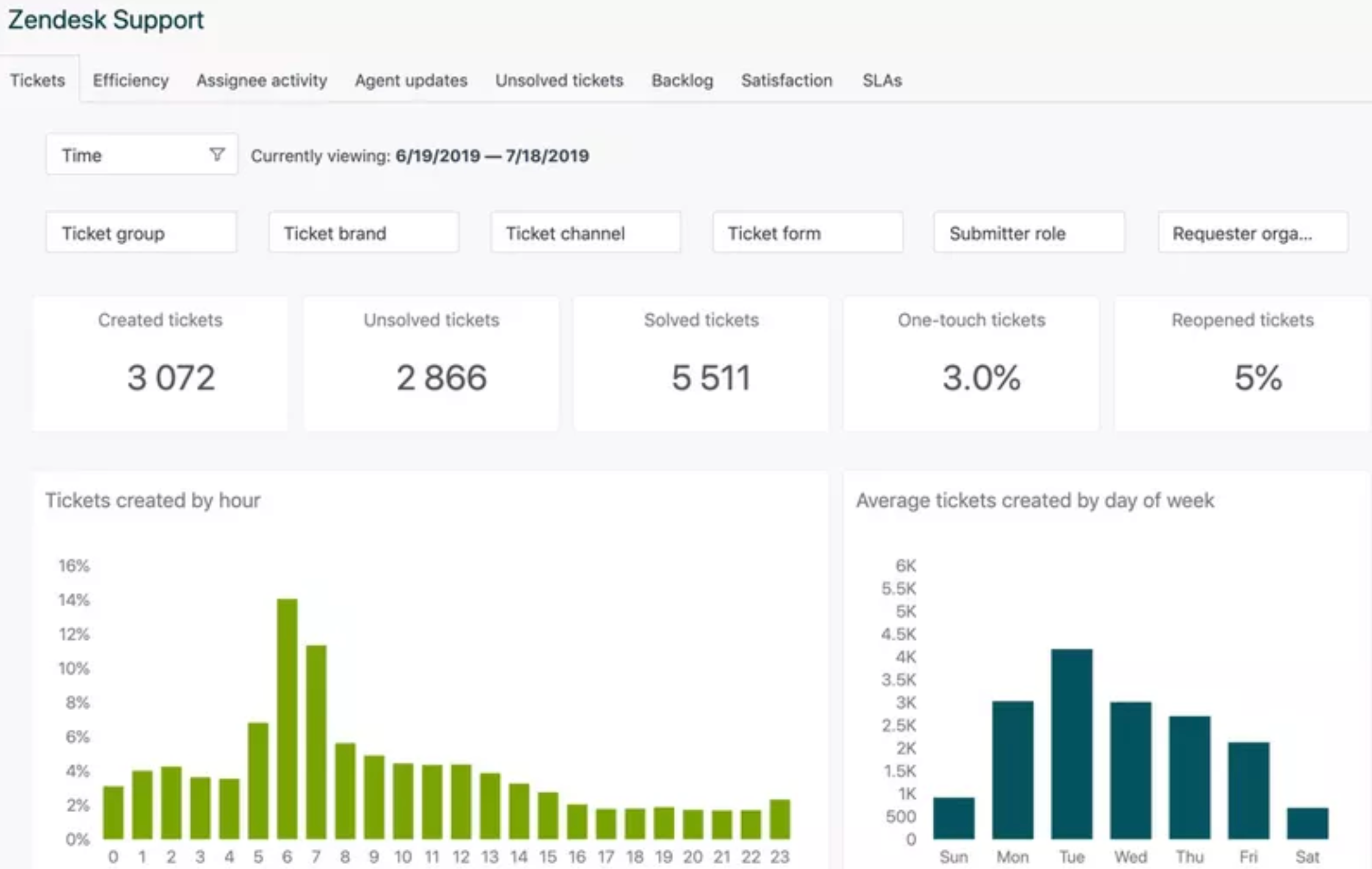
Hotjar
Hotjar is a great insight tool that customer success teams can use to view heatmaps and session recordings as well as implement in-app survey widgets. These features come together to make a pretty useful customer success software that provides unique insight into the user experience.

Custify
When it comes to tracking customer behavior, Custify is one of the best tools on the market. You’ll be able to look at your customer’s behavior, product usage, customer health score data, and journey for a holistic view of the user experience. Your customer success manager will even be able to set up automation flows.

ChurnZero
Reducing churn is an essential part of any customer success strategy which is why ChurnZero is such a great solution. You’ll be able to monitor NPS scores, customer health score data, segmentation data, and other key metrics throughout every stage of the customer journey.

Conclusion
Many companies get so caught up with increasing recurring revenue that they forget about the importance of customer success. But if you want to keep your top customers happy, achieve negative churn, and increase customer health scores then you have to constantly monitor the key customer success metrics.
New customer acquisition is undoubtedly one of the most exciting parts of running a SaaS company. However, focusing on new customers alone won’t be enough to compensate for a loss in recurring revenue if you neglect your existing customers.
Remember, the SaaS business model is heavily centered around the idea of subscriptions which makes customer success paramount. How happy customers are will directly impact your earnings making it increasingly important if you want to reduce churn or start cross-selling to your customer base.
Ready to start improving your onboarding and customer success strategy? Get a Userpilot demo today to see how you can accomplish all that and more without writing a single line of code!







